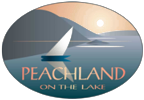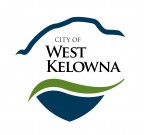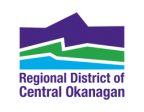Enjoy Okanagan Lake this weekend with a few safety precautions
News Release No. 28 Central Okanagan, B.C. — Heading into the May long weekend, Okanagan Lake is safe to be enjoyed responsibly by locals and visitors alike. The lake’s level is approaching full pool and as a precaution, boaters are asked to practice low-wake activities and keep some safety measures in mind for an enjoyable weekend on the water.
Boaters should watch for floating debris as a significant amount has flowed downstream into the lake. As lake levels rise, low-wake activities are encouraged during high water levels to minimize the erosion of vulnerable shoreline and the damage to property.
Below are some tips for boaters to ensure their safety and minimize damage to the foreshore.
- Ideally, wake height should be no more than 30 centimetres (1 foot).

- Large and heavier boats create damaging waves even at low speeds. Extra caution is needed when cruising the lake. Keep in the centre whenever possible.
- Small and light boats should remain 300 metres from the shoreline whenever possible or travel in the centre of the lake when approaching vulnerable shorelines. Travel under 10 km/h within 300 metres of the shoreline.
- When operating at no-wake speed, trim the drive or outboard to allow the boat to proceed with smallest wake possible.
- Watch for debris and submerged logs.
- Sun worshippers are encouraged to try wake-free options to enjoy Central Okanagan lakes or the many recreation and leisure activities available here. Stand-up paddleboards, kayaks and canoes are perfect for exploring the lakes and beaches. Hundreds of parks and trails offer great options for picnics or exploring nature.
Okanagan Lake currently sits at 342.42 metres and normal high-water level is 342.48. This is expected to rise to 2017 levels. Residents can monitor lake levels at wateroffice.ec.gc.ca and those near floodplains are asked to continue to prepare for high water. All measures used last year to protect property should be implemented this year.
Those along the waterfront are urged to take precautions, including securing their docks and making sure boat anchor lines are long enough so they don’t snap if water continues to rise.
Sand and sandbags are available throughout the region and new locations have been added. Updated information on locations is available at www.cordemergency.ca/map
Public works crews continued to install flood protection for rising lake levels at numerous locations across the Central Okanagan. This includes bladder dams, gabion barriers and sandbags along the lakefront.
These locations are based on a survey of waterfront properties on Okanagan Lake that are most prone to flooding from rising lake levels. Some of the installation considerations include protecting public infrastructure and foreshore areas that protect upland public assets. Crews will continue to install barriers in the coming days on a priority basis.
For up-to-date information, including active evacuation alerts and orders across the Central Okanagan, as well as flood-preparedness resources, visit cordemergency.ca.
For municipal information such as water quality advisories, visit their websites:







